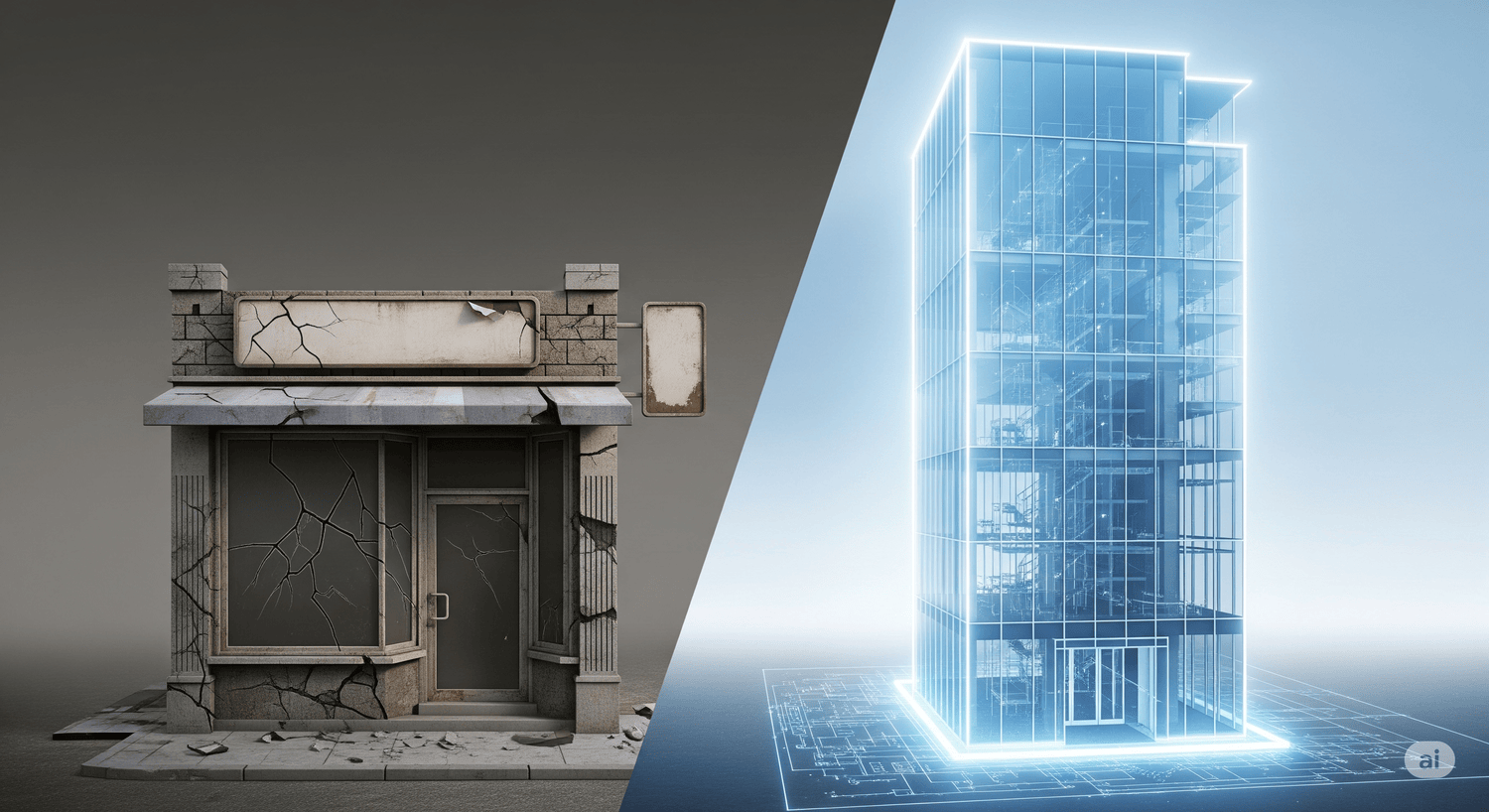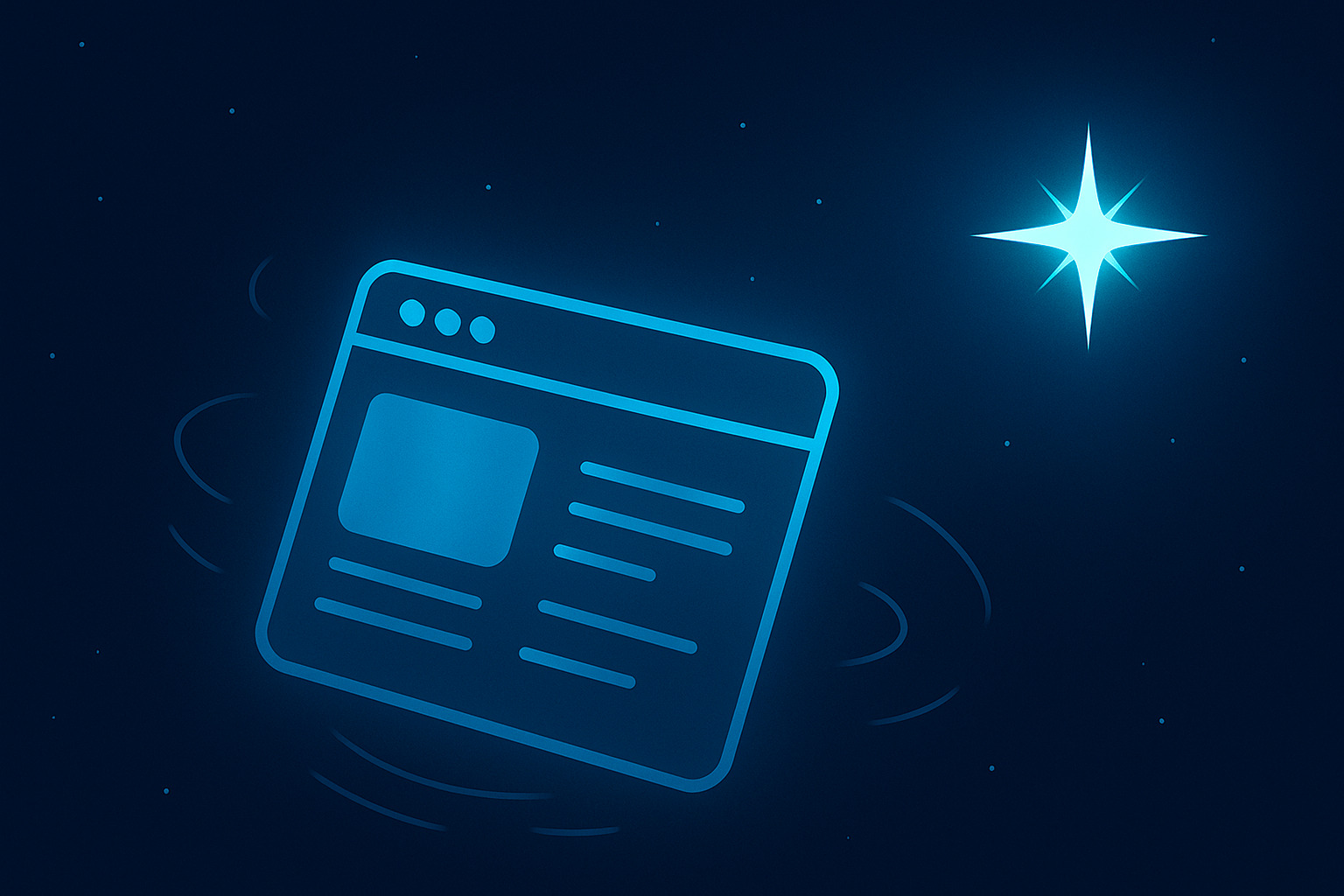Imagine walking past a row of shops. One is bright, clean, and modern. The other has a faded sign, dusty windows, and a design that screams it hasn’t been touched since the early 2000s. Which one do you trust? Which one do you enter?
Your website is your digital storefront, and visitors make that same snap judgment in just 50 milliseconds. An outdated website—with its clashing colors, pixelated graphics, and clunky layout—doesn’t just look bad; it actively tells potential customers that your business is out of touch, unprofessional, or worse, no longer relevant.
This isn’t just an aesthetic issue. As a website strategist who turns digital platforms into profit centers, I can tell you that an outdated design is a direct threat to your credibility and your bottom line.
The Credibility Crisis: When a Bad Look Becomes a Big Problem
An outdated website design triggers an immediate, subconscious crisis of trust. Today’s users are savvy, and their expectations are high.
- It Eradicates Trust: The data is stark. 94% of a user’s first impression is design-related, and an equal percentage of users report that they simply do not trust a poorly designed website. A site that feels old immediately makes visitors question the quality and security of your business.
- It Signals Stagnation: A website that hasn’t been refreshed in years suggests that the business itself is stagnant. It makes customers wonder if you’re keeping up with your industry or if you even care about your online presence.
- It Creates a Poor User Experience (UX): Outdated designs are almost always linked to bad UX. They suffer from confusing navigation, non-responsive layouts, and slow load times, all of which lead to frustration. According to research, 88% of online consumers are less likely to return to a site after a bad experience.
The Unseen Costs of an Outdated Website
The “if it ain’t broke, don’t fix it” mentality is costly. An outdated website is a “leaky funnel” that silently drains your resources and revenue.
- Lost Sales and Conversions: Businesses lose an estimated 35% of sales due to bad UX, which is inextricably linked to outdated design and functionality. If your site is hard to use or looks untrustworthy, visitors will not complete a purchase or fill out an inquiry form.
- Negative SEO Impact: Google’s algorithms prioritize websites that provide an excellent page experience. An outdated site often has poor UX metrics (like high bounce rates), is not mobile-friendly, and has accumulated “technical debt” that makes it difficult for search engines to crawl and rank effectively.
- Wasted Marketing Spend: Investing in advertising to drive traffic to a website that immediately repels visitors is a surefire way to get a negative return on investment. You are paying to send potential customers to a digital dead end.
The Fix: A Blueprint for a Modern, High-Performing Website
Modernizing your website isn’t just about a visual makeover; it’s a strategic overhaul focused on trust, usability, and performance. Here is your actionable plan to bring your site into 2025.
- Prioritize a Clean, Uncluttered Layout: Modern design is about clarity. Use ample whitespace to reduce cognitive load and help users focus on your key message. Avoid the cluttered, multi-column layouts of the past.
- Invest in High-Quality, Purposeful Visuals: Ditch the cheesy, generic stock photos. Use professional, high-resolution images and videos that are authentic to your brand and support your message. Your hero image should immediately convey what you do.
- Standardize Your Typography and Colors: Choose 2-3 modern, readable fonts and a consistent color palette that aligns with your brand identity. This creates a cohesive and professional look across your entire site.
- Implement a Mobile-First, Responsive Design: With over half of all web traffic coming from mobile, your website must adapt seamlessly to all screen sizes. This is no longer optional; it’s a fundamental requirement for survival.
- Focus on an Intuitive User Experience: Make sure your navigation is simple and predictable. Users should be able to find what they need within three clicks. Use clear, descriptive labels and remove anything that doesn’t serve a purpose.
- Conduct a Website Audit: Start by running your site through Google’s PageSpeed Insights and Mobile-Friendly Test tools. This will give you a clear list of technical issues to address, from slow load times to broken links.
A Fresh Look is a Powerful Business Tool
Case studies consistently show the dramatic impact of a modern redesign. MailReach, for example, saw a 60% increase in its conversion rate after a UX overhaul focused on simplifying the layout and modernizing visuals. Another case study saw paid subscriptions increase by 102% after the homepage was updated with a clearer layout and a human photo.
Your website is your most important digital asset. Treating it like a relic from the past is a direct path to irrelevance. By investing in a modern, user-centric design, you’re not just creating a “pretty” site—you’re building a powerful engine for trust, engagement, and sustainable growth.













